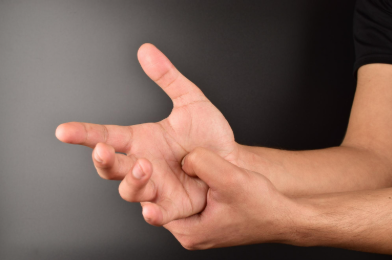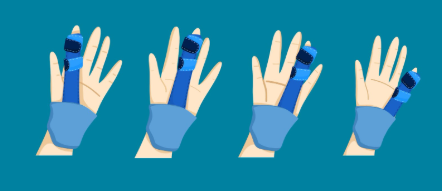By : Geraldus Sigap

Have you ever woken up and found your finger difficult to move or even “locked” in a bent position? If so, you might be experiencing a condition called Trigger Finger, medically known as stenosing tenosynovitis. Though it may seem minor, this condition can significantly interfere with daily activities if left untreated.
What is Trigger Finger?
Trigger finger occurs when one of the fingers becomes stiff or stuck when moved. In some cases, the finger can lock in a bent position and may only straighten with help from the other hand or produce a “click” sound. This is caused by inflammation in the flexor tendon, making it difficult for the tendon to glide smoothly through its sheath (pulley).
Symptoms to Watch For:
- Finger stiffness, especially in the morning
- Pain when bending or straightening the finger
- Finger locking in a specific position
- Clicking or snapping sensation when moving the finger
- Swelling or a small lump at the base of the finger on the palm
Who’s at Risk?
Trigger finger can affect anyone, but it’s more common in:
- People with repetitive hand activities (e.g., typing, sewing, gripping tools)
- Those with diabetes mellitus
- Patients with rheumatoid arthritis
- Women over the age of 40
Diagnosis
Doctors typically diagnose trigger finger through a physical exam and medical history. In some cases, ultrasound may be used for a clearer view of the tendon.
Treatment Options
Treatment depends on severity. Options include:
- Rest & Cold Compresses – Reducing hand activity and applying ice
- NSAIDs – To relieve pain and swelling
- Corticosteroid Injections – Often effective in reducing inflammation
- Physical Therapy & Splinting – To keep the finger straight during sleep
- Surgery – Considered if conservative treatments fail; involves releasing the tendon sheath

Prevention
- Avoid excessive repetitive hand movements
- Use ergonomic tools
- Maintain stable blood sugar levels if diabetic
- See a doctor early if symptoms arise
Locked fingers may signal tendon issues. Early treatment improves prognosis significantly. If non-surgical treatments such as pain relievers, finger splinting, or steroid injections do not provide improvement, surgical intervention may be necessary. This procedure is known as trigger finger release surgery, which involves cutting the narrowed tendon sheath to restore normal tendon movement.
In certain cases, especially when accompanied by other nerve-related symptoms such as persistent tingling or muscle weakness, a consultation with a neurologist may be required to evaluate the possibility of an underlying nerve disorder.
Experiencing stiff, painful fingers in the morning? Don’t wait for it to worsen. Book a consultation with a hand surgeon or orthopedic specialist today. Contact RS Abdi Waluyo at 021-3144989 or make an appointment online now.
FAQ
- What is Trigger Finger?
Trigger finger is a condition where a finger becomes stiff, painful, or locked in a bent position due to inflammation in the flexor tendon of the hand.
- What causes trigger finger?
Mainly repetitive finger use, which leads to tendon irritation and swelling. Risk factors include diabetes, rheumatoid arthritis, and occupations requiring intense hand use.
- Can trigger finger heal without surgery?
Yes. Many mild to moderate cases improve with rest, pain relief, physical therapy, or corticosteroid injections. Surgery is only recommended if conservative therapy fails.
- Is trigger finger dangerous?
Not life-threatening, but it can severely impact daily function and quality of life. Left untreated, the condition may worsen and cause permanent locking.
- When should I see a doctor?
If you often experience finger pain, stiffness, or trouble straightening your finger (especially in the morning), consult an orthopedic or hand specialist promptly for further evaluation.
Resource :
- Jeanmonod R, Tiwari V, Waseem M. Trigger Finger. [Updated 2024 Feb 5]. In: StatPearls [Internet]. Treasure Island (FL): StatPearls Publishing; 2025 Jan
- Donati D, Ricci V, Boccolari P, et al. From diagnosis to rehabilitation of trigger finger: a narrative review. BMC Musculoskelet Disord. 2024 Dec 23;25(1)
- Matthews A, Smith K, Read L, et al. Trigger finger: An overview of the treatment options. JAAPA. 2019 Jan;32(1):17-21
